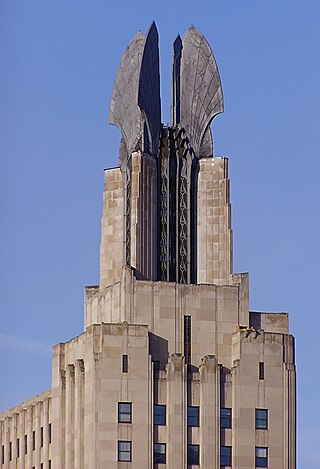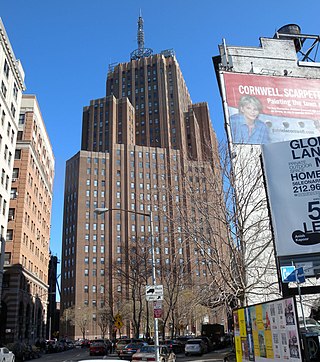Related Research Articles

Macy's, Inc. is an American holding company of department stores. Upon its establishment in 1929, Federated held ownership of the regional department store chains Abraham & Straus, Lazarus, Filene's, and Shillito's. Bloomingdale's joined Federated Department Stores the next year. Throughout its early history, frequent acquisitions and divestitures saw the company operate a number of nameplates. In 1994, Federated took over the department store chain Macy's. Despite a long history of preserving regional nameplates, with the acquisition of The May Department Stores Company in 2005, they were retired and replaced by the Macy's and Bloomingdale's brands nationwide by 2006. Ultimately, Federated itself was renamed Macy's, Inc. in 2007.

Macy's is an American department store chain founded in 1858 by Rowland Hussey Macy. It has been a sister brand to the Bloomingdale's department store chain since being acquired by holding company Federated Department Stores in 1994, which renamed itself Macy's, Inc. in 2007. It is the largest department store company by retail sales in the United States as of 2015.

Bloomingdale's Inc. is an American luxury department store chain founded in 1861 by Joseph Bloomingdale and Lyman Bloomingdale. It was acquired by Federated Department Stores in 1930, which acquired the Macy’s department store chain in 1994, when they became sister brands. Ultimately, Federated itself was renamed Macy’s, Inc. in 2007.

Congregation Emanu-El of New York is the first Reform Jewish congregation in New York City. It has served as a flagship congregation in the Reform branch of Judaism since its founding in 1845. The congregation uses Temple Emanu-El of New York, one of the largest synagogues in the world.

Ralph Thomas Walker FAIA was an American architect, president of the American Institute of Architects and partner of the firm McKenzie, Voorhees, Gmelin and its successor firms Voorhees, Gmelin and Walker; Voorhees, Walker, Foley & Smith; Voorhees, Walker, Smith & Smith; and Voorhees, Walker, Smith, Smith & Haines. Walker is best known for his designs for the Barclay–Vesey Building (1922–26) and 1 Wall Street (1928–31), but was also involved in numerous other Art Deco telecommunications buildings in the New York City area.

1 Wall Street is a mostly residential skyscraper in the Financial District of Lower Manhattan, New York City, on the eastern side of Broadway between Wall Street and Exchange Place. 1 Wall Street, designed in the Art Deco style, is 654 feet (199 m) tall and consists of two sections. The original 50-story building was designed by Ralph Thomas Walker of the firm Voorhees, Gmelin and Walker and constructed between 1929 and 1931, while a 36-story annex to the south was designed by successor firm Voorhees, Walker Smith Smith & Haines and built between 1963 and 1965.
Cyrus Lazelle Warner Eidlitz was an American architect best known for designing One Times Square, the former New York Times Building on Times Square. He is founder of the architecture firm presently known as HLW International, one of the oldest architecture firms in the United States.

The Barclay–Vesey Building is an office and residential building at 140 West Street in Lower Manhattan, New York City. The 32-story building was designed in the Art Deco style by Ralph Walker of Voorhees, Gmelin and Walker, and was Walker's first major commission as well as one of the first Art Deco skyscrapers. It occupies the entire block bounded by West Street to the west, Barclay Street to the north, Vesey Street to the south, and Washington Street to the east, abutting the World Trade Center.

60 Hudson Street, formerly known as the Western Union Building, is a 24-story telecommunications building in the Tribeca neighborhood of Manhattan in New York City. Built in 1928–1930, it was one of several Art Deco-style buildings designed by Ralph Thomas Walker of Voorhees, Gmelin and Walker for telecommunications in the early 20th century. 60 Hudson Street spans the entire block between Hudson Street, Thomas Street, Worth Street, and West Broadway.

The Times Square Building is an Art Deco skyscraper designed by Ralph Thomas Walker of the firm Voorhees, Gmelin, and Walker located in Rochester, New York, United States. At 260 feet (79 m), it is the eighth-tallest building in Rochester, with 14 floors. The former Genesee Valley Trust Building is a streamlined twelve-story building supporting four aluminum wings 42 feet (13 m) high, known as the "Wings of Progress", each weighing 12,000 pounds (5,400 kg). These structures are among the most distinctive features of the Rochester skyline. The trompe-l’oeil style is used for the decor throughout the building's interior and features various depictions of stylized wheat in reference to Rochester's presence as "the flour city". The building originally hosted a Depression era mural by Carl William Peters (1897-1980) on exhibit from its opening that was later destroyed.

HLW is a full-service design firm headquartered in New York City, with offices in Madison, New Jersey; Stamford, Connecticut; Los Angeles and San Francisco, California; West Palm Beach, Florida; and London. HLW is one of the oldest continuously operating design firms in the United States.

The New Jersey Bell Headquarters Building is located in Newark, Essex County, New Jersey, United States. The building was built in 1929 by the New Jersey Bell Telephone Company and was added to the National Register of Historic Places on September 21, 2005. The art deco building was designed by Ralph Thomas Walker of the architectural firm Voorhees, Gmelin, and Walker. The buff brick and sandstone façade is decorated with pilasters created by sculptor Edward McCartan. Since the building's opening, soft orange lights have bathed its upper floors at night. The building is 20 stories and 275 ft (84 m) tall. The building later became headquarters for Verizon New Jersey, Inc.

32 Avenue of the Americas is a 27-story, 549-foot-tall (167 m) telecommunications building in the Tribeca neighborhood of Manhattan in New York City. Completed in 1932, it was one of several Art Deco-style telecommunications buildings designed by Ralph Thomas Walker of Voorhees, Gmelin and Walker in the early 20th century. 32 Avenue of the Americas spans the entire block bounded by Walker Street, Lispenard Street, Church Street, and Avenue of the Americas.

The Chesapeake and Potomac Telephone Company Building is a historic structure located in Downtown Washington, D.C. It was listed on the National Register of Historic Places in 1988.

The National Bible Institute School and Dormitory is an historic "pre-war" Venetian-Gothic building at 340 West 55th Street between Eighth Avenue and Ninth Avenue in the Hell's Kitchen neighborhood of Manhattan, New York City. It was built in 1925 to serve as a school and dormitory for The National Bible Institute. Today it is a 56 - unit luxury co-op building known as The Sherwood.
Ermelindo Eduardo Ardolino, known as Edward Ardolino was an Italian-born American stone carver and architectural sculptor of the early twentieth century. He was the most prominent member of the Ardolino family of stone carvers. He worked with leading architects and sculptors, including architect Bertram Grosvenor Goodhue and sculptor Lee Lawrie. Ardolino participated in at least nine Goodhue-Lawrie collaborations including the Los Angeles Public Library and the Nebraska State Capitol. His carvings adorn a significant number of important public and private buildings and monuments, including four buildings in the Federal Triangle of Washington, D.C.

Stephen Francis Voorhees FAIA was an American architect in practice in New York City from 1910 until 1959. From 1935 to 1937 he was president of the American Institute of Architects.

The BellTel Lofts is a mostly residential building at 101 Willoughby Street and 365 Bridge Street in the Downtown Brooklyn neighborhood of New York City. Constructed from 1929 to 1931 as the headquarters for the New York Telephone Company, it is located at the northeast corner of Willoughby and Bridge Streets. It was one of several Art Deco-style telecommunications buildings designed by Ralph Thomas Walker of Voorhees, Gmelin and Walker in the early 20th century. The building was renovated into a residential complex in the mid-2000s.

The Salvation Army Headquarters is a building at 120–130 West 14th Street in the Chelsea and Greenwich Village neighborhoods of Manhattan in New York City. The building, owned by charitable organization the Salvation Army, is composed of a four-story auditorium named the Centennial Memorial Temple, a 12-story office building, and a 17-story dormitory named the Markle Evangeline. All three sections were designed in the Art Deco style by Ralph Thomas Walker of Voorhees, Gmelin and Walker and were constructed from 1928 to 1930 as the headquarters for the Salvation Army. The auditorium and office building are also New York City designated landmarks.
References
- ↑ Walker, Ralph Ralph Walker: Architect, of Voorhees Gmelin & Walker, Voorhees Walker Foley & Smith, Voorhees Walker Smith & Smith , Henanan House, New York, 1957 p. 14
- ↑ Robert D. Kuhn (March 1990). "National Register of Historic Places Registration: Justice Court Building". New York State Office of Parks, Recreation and Historic Preservation . Retrieved 2010-11-20.
- ↑ Stone, Stone Publishing Company, Volume 43, 1922, p. 91.
- ↑ Stern, Robert A. M.; Gilmartin, Patrick; Mellins, Thomas (1987). New York 1930: Architecture and Urbanism Between the Two World Wars . New York: Rizzoli. p. 154. ISBN 978-0-8478-3096-1. OCLC 13860977.
- ↑ "Bloomingdale's Is Closing Store in Queens, Its First Branch". The New York Times. May 22, 1949. Retrieved 12 February 2024.
- ↑ Brown, John Mason (1954). "The Grace Rainey Rogers Auditorium" . The Metropolitan Museum of Art Bulletin. 12 (9): 249–255. doi:10.2307/3257567. ISSN 0026-1521.
- Wilson, Richard Guy, The AIA Gold Medal, McGraw-Hill Book Company, New York, 1984 p 184-185